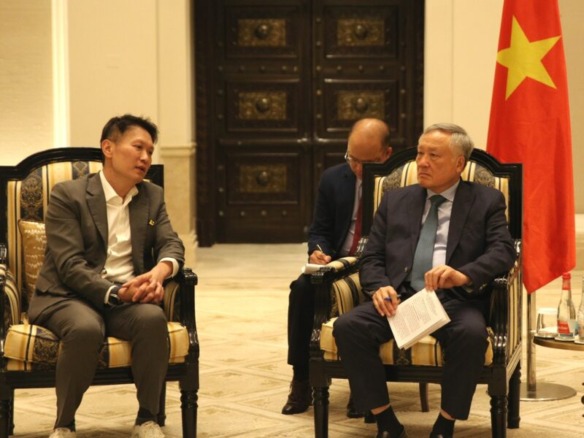Contents
Foreign Workers in Vietnam are transforming the nation’s economy. Over 135,000 expatriates from 110 countries contribute skills and innovation. This trend attracts foreign investors eyeing real estate and business opportunities. As Vietnam grows, these workers drive demand for housing and infrastructure.
Current Landscape of Foreign Workers in Vietnam
Vietnam hosts a vibrant mix of international talent. In 2023, more than 135,000 foreign workers arrived from over 110 nations. They fill gaps in technology, management, and specialized fields. This influx reflects Vietnam’s appeal as an investment hub.
Moreover, the country’s labor force totals 53 million people aged 15 and above. Nearly 24.7 million are women. Meanwhile, over 500,000 Vietnamese work abroad in 43 countries, including Japan and Korea.
However, local workers face competition in skills and language. To address this, Vietnam enhances training and international ties.
Statistical Overview of Foreign Labor
Key figures highlight the scale:
- Over 135,000 foreign workers active since 2023.
- Sourced from 110+ countries and territories.
- Supplementing Vietnam’s 53 million domestic workforce.
- High safety training rate: Over 95% for expatriates.
In the first half of 2025, urban workers earned VND 10.4 million monthly on average. Rural areas lagged at VND 8.4 million. These stats show economic dynamism.
Additionally, foreign labor supports FDI sectors. This boosts productivity and innovation.
Economic Contributions and Investment Implications
Foreign Workers in Vietnam bring expertise that fuels growth. They introduce modern management and technology. As a result, the economy gains from diverse knowledge.
For investors, this means opportunities in real estate. Expatriates increase demand for upscale housing and offices in cities like Hanoi and Ho Chi Minh City. In fact, Vietnam’s real estate market in 2025Vietnam’s real estate market in 2025 is primed for Southeast Asian investments.
Furthermore, infrastructure projects rise to accommodate this workforce. Urbanization and middle-class expansion drive property values. Experts predict steady recovery in 2025, with foreign capital inflows.
Government Policies Protecting Foreign Workers
Vietnam’s laws safeguard expatriates effectively. The Labor Code and Occupational Safety Law ensure rights. For instance, foreign workers join social, health, and accident insurance via agreements.
Over 95% receive safety training, keeping accidents low. Policies promote transparency in recruitment, setting standards for skills and health.
Recent updates, like Decree 219/2025, streamline processes for hiring foreign employees in Vietnam. This fosters a secure environment.
ILO expert Felix Weidenkaff praises these measures. They build trust for international investors.
Challenges and Recommendations for the Future
Despite progress, challenges persist. Language barriers hinder safety guidance. Recommendations include multilingual resources in English, Korean, and Japanese.
Additionally, strengthen inspections in FDI areas. Build labor safety databases for better oversight.
Looking ahead, the 2025 ASEAN Forum in Malaysia will discuss decent jobs and safe migration. Vietnam aims to refine policies, enhancing appeal for investors.
In summary, Foreign Workers in Vietnam signal robust opportunities. Investors should monitor recent updates to work permit regulations to capitalize on this trend.





Join The Discussion